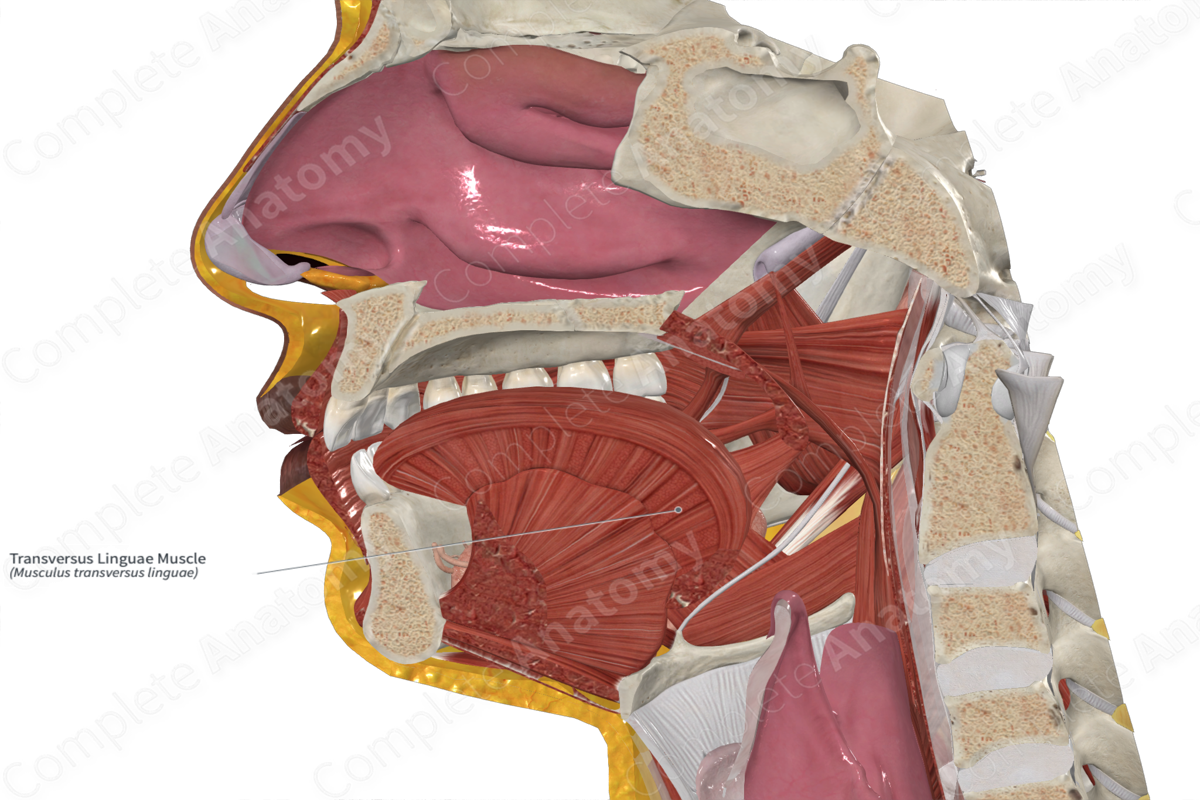
Quick Facts
Origin: Lingual septum.
Insertion: Dorsum and lateral margins of tongue.
Action: Elongates and narrows tongue.
Innervation: Hypoglossal nerve (CN XII).
Arterial Supply: Lingual artery.
Related parts of the anatomy
Origin
The fibers of the transversus linguae muscle arise from the lingual septum.
Insertion
The fibers of the transversus linguae muscle extend to the lingual margins and towards the dorsum of the tongue. At its lateral margins, the transversus linguae muscle fibers blend with the palatopharyngeus muscle, the muscle which forms the palatopharyngeal arches (palatopharyngeal fold or posterior pillar/column of fauces) on either side of the oropharynx.
Key Features & Anatomical Relations
The transversus linguae muscle is one of the intrinsic muscles of the tongue.
Actions
Overall, the intrinsic muscles of the tongue facilitate the change in the shape of the tongue, which is necessary for phonation and to facilitate deglutition. The transversus linguae muscle elongates and narrows the tongue (Standring, 2016).
References
Standring, S. (2016) Gray's Anatomy: The Anatomical Basis of Clinical Practice. Gray's Anatomy Series 41st edn.: Elsevier Limited.



